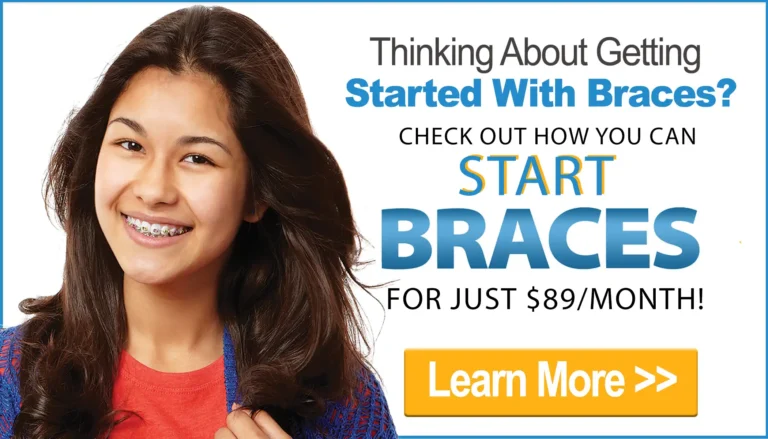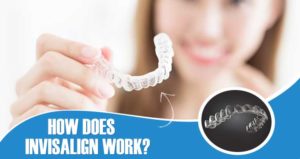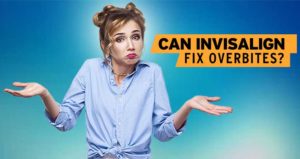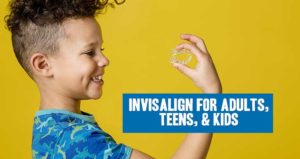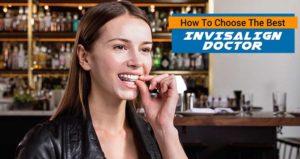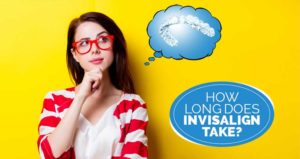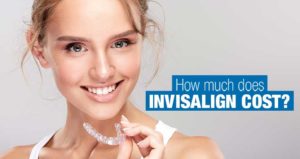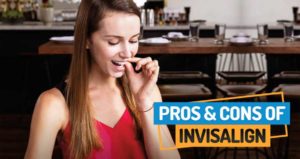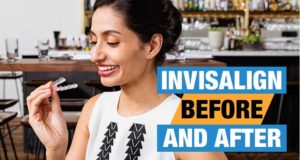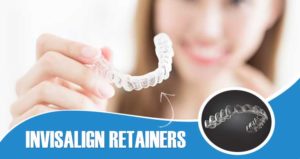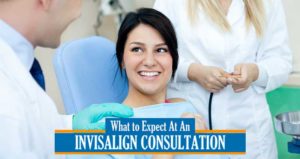chapter
07
The Pros and Cons of Invisalign
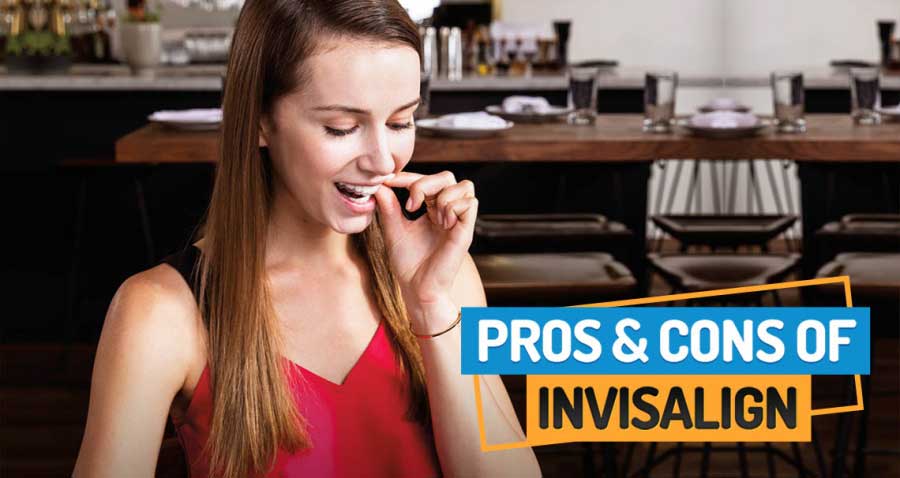
If Invisalign is such an amazing experience, why does anyone still choose braces?
Like most things in life, there are “different strokes for different folks”.
Even with advancing technology, Invisalign may not be the perfect option for everyone. There are, in fact, pros and cons to Invisalign treatment. And we list all of them below…
The Benefits of Invisalign - They’re Nearly Invisible!
When considering the pros and cons of Invisalign, the benefit most people recognize is right there in the name…
Invisalign is invisible! (Well, nearly invisible…)

For those who don’t love the “metal mouth” look of braces, Invisalign is a great alternative.
With Invisalign, you can straighten your teeth without anyone knowing!
In fact, many celebrities and public figures have used Invisalign to straighten thier teeth while living in the spotlight and strolling the red carpet.
Some celebrities treated with Invisalign include:
- Justin Bieber
- Zac Efron
- Oprah Winfrey
- Keira Knightley
- Khloe Kardashian
- Serena Williams
- The Duchess Kate Middleton
Movie stars, professional athletes, singers, even royalty have used Invisalign to straighten their teeth without drawing unwanted attention.
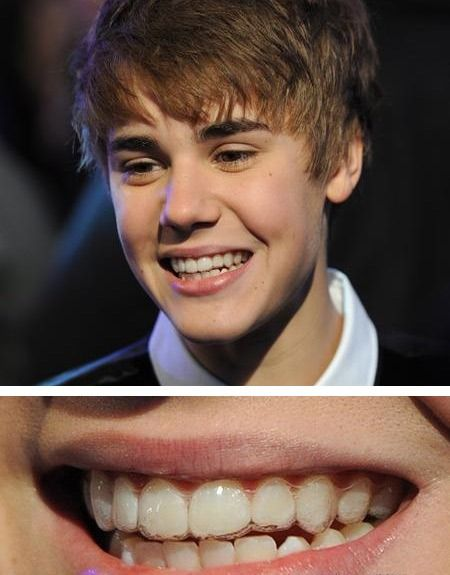
Justin Beiber wearing his Invisalign aligners.
Benefits of Invisalign - No Food or Dietary Restrictions
If you or anyone you know had braces…
… you know how long the “do-not-eat with braces” list can be.
Those with braces have to avoid…
- Popcorn
- Breads with hard crusts such as bagels
- Biting into apples or corn on the cob
- Most kinds of candy or gum
…and any other hard, crunchy or sticky foods.
Meanwhile, with Invisalign, none of your favorite foods are restricted…
You simply remove your aligners and can eat whatever you like!
Benefits of Invisalign - Brushing and Flossing is Easy
You may have heard horror stories of kids who don’t brush their teeth with braces. Some of the scary consequences include…
- Cavities
- Swollen gums
- Permanent white scars on your teeth
…and are all a result of poor brushing and flossing with braces.
Brushing and flossing with braces, while not impossible, is more difficult than normal brushing.

With Invisalign, there are no brackets and wires to trap food and patients with Invisalign usually have fewer problems with poor oral hygiene.
Now, don’t be mistaken… you still NEED to brush and floss during Invisalign treatment…
…the main benefit is just that it’s easier and takes less time to brush and floss with Invisalign than with braces.
With Invisalign, there are no brackets and wires to trap food and patients with Invisalign usually have fewer problems with poor oral hygiene.
Now, don’t be mistaken… you still NEED to brush and floss during Invisalign treatment…
…the main benefit is just that it’s easier and takes less time to brush and floss with Invisalign than with braces.
Benefits of Invisalign - Shorter and Fewer Appointments
Braces require a lot of manual work and continual maintenance on the part of the orthodontist.
Like a car, braces require very frequent “check-ups” and even “repairs” like…
- Bonding the brackets
- Changing wires
- Placing rubber bands
- Connecting springs…
…just to name a few things.
Most of these time-consuming procedures are completely eliminated with Invisalign treatment.
The average braces appointment takes 20-40 minutes…
…while the average Invisalign appointment takes 10!
With Invisalign, you also benefit from far fewer appointments.
In our office, for example, we see our patients with braces at 6-8 weeks intervals. Invisalign patients, on the other hand, only need to be seen once every 10-12 weeks.
With shorter appointment times and fewer overall return visits, Invisalign treatment means less time off of work or school…
…and more vacation or sick days you can save for another time.
Benefits of Invisalign - Less Discomfort and Irritation
Braces can take some getting used to.
Until your cheeks adapt and “toughen up”, there is usually some discomfort from the new braces and wires that are placed on your teeth.

You can expect sore teeth for a few days when you start braces…
…this is part of the process and something that happens to just about everyone.

By removing the braces and wires from the equation, Invisalign reduces or eliminates most of the discomfort that patients with braces have to experience.
Just to review, the greatest benefits of Invisalign, especially when compared to braces, include:
- Being less noticeable (“nearly invisible”)
- No food or dietary restrictions
- Easy brushing and flossing
- Fewer and shorter appointments
- Less irritation and discomfort
Potential Drawbacks of Invisalign - If You Don’t Wear It… Nothing Happens
Now that we’ve discussed what makes Invisalign great, it’s time to discuss some of the reasons why it may not be the best choice for everyone.
The biggest reason… you have to wear it!
This may seem obvious to most people, but self-motivation and discipline are a major component to the success of your Invisalign treatment.
When aligners can come on and off this easily, some people may find themselves forgetting to put them on regularly, or will lose their aligners altogether.
As a ‘best-practices’ rule, Invisalign aligners should be worn about 21 hours per day. This means all the time except when eating and brushing your teeth.
So you may be wondering, what happens if you don’t wear your aligners as instructed?
There’s a few things that can happen, and none of them are in your favor…
- Your teeth won’t “keep up” with the aligners, which means your treatment may take longer.
- Those who don’t wear their aligners as instructed will usually get sore teeth and experience more discomfort (as bad as braces).
- The final treatment result will be less than ideal, even though it cost you the same amount as someone who wore them correctly and got better results.
- Some tooth and bite problems CAN’T BE FIXED if the Invisalign aligners aren’t worn as prescribed.
In our practice, about one out of twenty Invisalign patients end up with braces due to not wearing their aligners full-time.
When considering the pros and cons of Invisalign, this is the big question to consider…
Will I (or will my child) stick with this process until completion?
For some, the answer is no…
…and that’s okay!
It’s better to know this about yourself or your child beforehand. In this case, braces will be the best option and your surest way to successful treatment.
Thankfully, the majority of adults, teens, and kids wear their Invisalign aligners appropriately! They stick with the program, wear their Invisalign aligners as instructed, and get fantastic results!
Potential Drawbacks of Invisalign - It’s Not For Frequent Snackers or Sippers
Invisalign aligners should be removed to eat or drink anything besides water. This is because the aligners will trap food particles and will result in yellow, discolored aligners and can cause cavities or gum disease.
After eating or drinking, it’s recommended that you clean your teeth prior to placing your aligners back in.
If you enjoy sipping coffee throughout the day…
…or if you frequently snack between meals…
…you may find that Invisalign interrupts your normal routine.

But don’t think of this as a deal breaker. It will simply mean temporarily changing your habits so you eat at meal times and sip water instead of coffee.
Like with anything, your body gets used to whatever new habits you start – soon it will feel just as natural to not sip and snack as it once did to do so.
Some even report that they eat less frequently and lose a few unwanted pounds during Invisalign treatment!
No, this isn’t a diet plan… but it can be an unexpected perk 🙂
Potential Drawbacks of Invisalign - Speaking With Your Aligners Takes Practice
The first time you try your Invisalign aligners, it may be difficult to pronounce certain words.
Speaking might feel a little bit awkward in general, however, this is no reason to be discouraged.
Most usually adapt within a couple of days and any speech issues are resolved within a week. We recommend reading a book out loud while wearing your Invisalign aligners for a couple minutes a day during that first week…
This helps to train your tongue and helps you more quickly adapt to your aligners.
Potential Drawbacks of Invisalign - Some Tooth and Bite Problems Are Difficult to Correct With Invisalign
Certain tooth and bite problems may be better treated with braces. (The same is true for Invisalign.)
This is why receiving a free consultation from an orthodontist is so important – they will always know what option is best for your situation.
The majority of orthodontic patients can be successfully treated with either braces or Invisalign…
…and it will really come down to personal preference.
At your initial consultation, one of the doctors of Premier Orthodontics can evaluate your teeth and bite and let you know whether Invisalign is the best choice for you before making any kind of decision.
To review, the biggest potential drawbacks of Invisalign include:
- The need to have self-discipline and motivation to wear aligners exactly as instructed
- Having to change some habits, such as frequent snacking or sipping of beverages.
- Speaking can be difficult for the first week or so.
- Certain tooth and bite problems may be more difficult or require more time to treat with Invisalign than with braces.
Is Invisalign The Best Choice For You or Your Child?
This question is best answered after reviewing the pros and cons of Invisalign listed above and discussing your treatment with an orthodontist.
The number-one question when considering the benefits and drawbacks of Invisalign is:
What is absolutely best for the patient?
That is what we will discuss and what will ultimately determine our decision when choosing braces or Invisalign.
Now that you understand more about the pros and cons of Invisalign, let’s look at some real-life before and after pictures of patients treated with Invisalign at Premier Orthodontics!
Click below to continue reading in Chapter 8.
Schedule a Free Initial Consultation for Invisalign For You or Your Child
You can schedule a 100% free consultation for Invisalign you or your child with Premier Orthodontics to find out if Invisalign is the best choice for you.
An initial exam and Invisalign consultation is 95% about getting your major questions and concerns answered directly by a professional, like:
![]() Will Invisalign work for me?
Will Invisalign work for me?
![]() What costs should I expect?
What costs should I expect?
![]() How long will the treatment take?
How long will the treatment take?
![]() And any other questions you may have.
And any other questions you may have.

